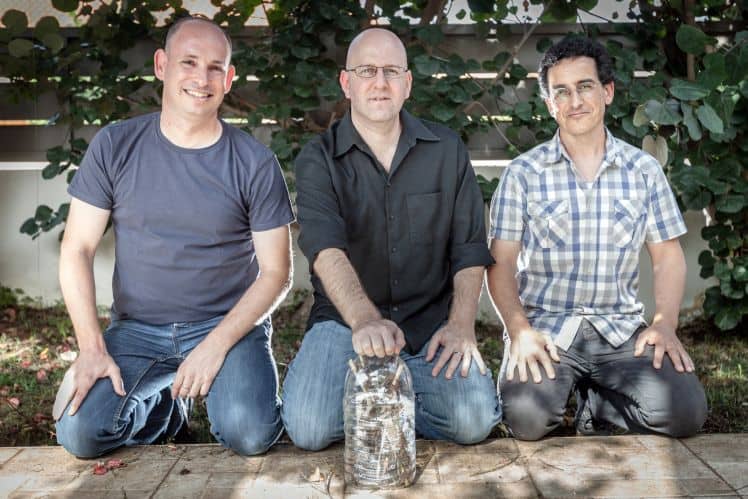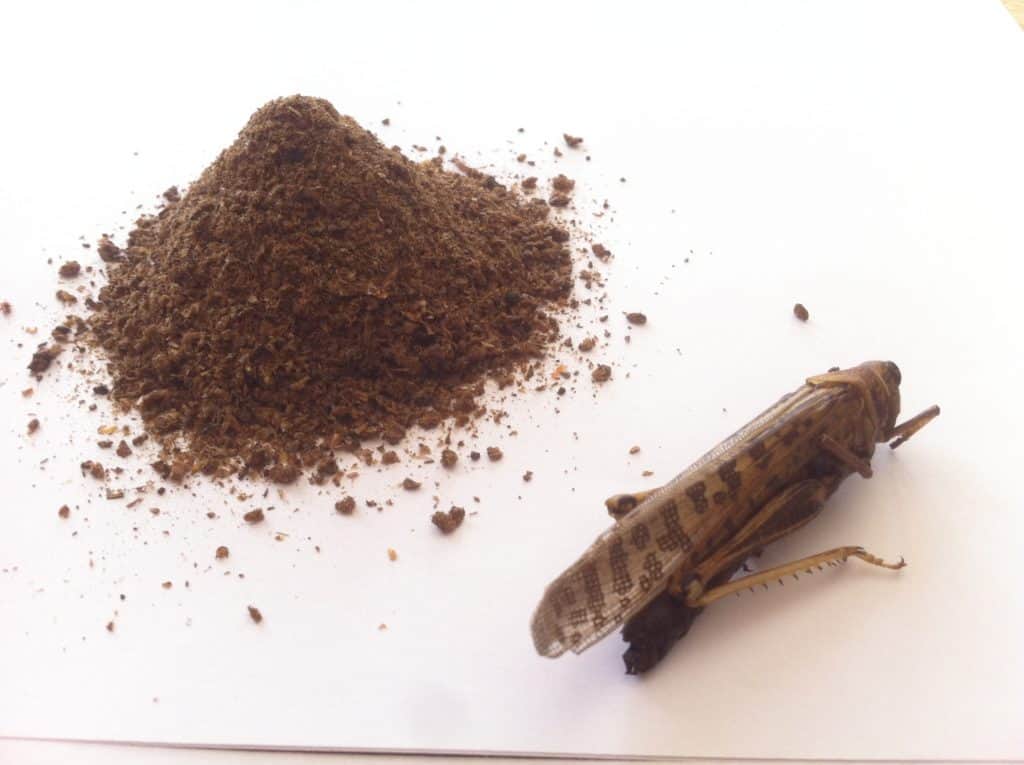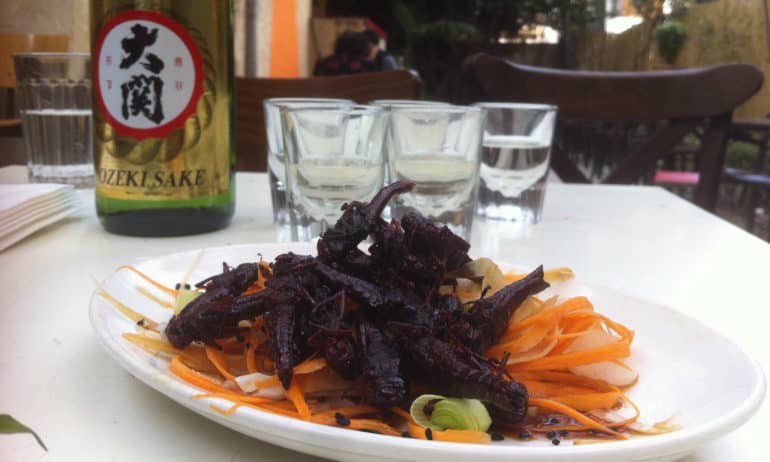Hargol FoodTech, the first company to produce large quantities of grasshoppers for human consumption, is now distributing to manufacturers in the United States. Grasshoppers CAN BE a source of healthy protein and nutrients, including iron and Vitamin C. Hargol’s primary product is currently grasshopper flour, and they hope to sell whole grasshoppers and food additives in the near future.
Farming grasshoppers is less damaging to the climate than the meat and dairy industries because significantly less greenhouse gases are produced, production is less resource intensive, and less land is required. Previously, grasshoppers were harvested from nature because they are difficult to grow in captivity. Hargol overcame these hurdles with innovations such as an incubator and vertical infrastructure, adhering to recently approved animal welfare policy recommendations from the United Nations.
Hargol, formerly Steak Tzar Tzar, has garnered praise from numerous food-related organizations for their innovation. Food Tank had the opportunity to discuss Hargol FoodTech and grasshopper farming with the company’s Co-Founder and CEO, Dror Tamir.

Food Tank (FT): What are the impacts of grasshopper production? Is grasshopper production something that can be done on a large scale?
Dror Tamir (DT): With the need for alternative healthier and more sustainable protein sources, grasshoppers provide a superior solution in every aspect: better nutrition, higher efficiency of farming, and minimal processing. Many insect farmers (both crickets and mealworms) tried to grow grasshoppers. All of them failed because grasshoppers are challenging.
We cracked the code to growing grasshoppers. We can grow them year-round by hatching their eggs in our incubators in two weeks vs. nine months in the wild, and we can grow them vertically at high density, producing much more biomass per square foot compared to crickets, with the innovative cage infrastructure we developed. Other advantages of our infrastructure are better sanitation, with the automatic removal of feces, and better ventilation and humidity control, making our facility safer for insects and humans. And it is a zero waste operation.
When considering intensive farming, one has to start with the animal. Grasshoppers’ tendency to swarm makes them ideally suited for it. Combining grasshoppers’ tendency to swarm with our methods and technology results in the ability to grow them in large scale, year round, at a high efficiency. We are already doing it, and our products will reach the U.S. market this month!
FT: How does the product compare to beef nutritionally?
DT: Grasshoppers are superior to beef not only in nutrition content. It is much more efficient and sustainable. Grasshoppers contain way more protein than beef with a whopping 72-percent protein content including all essential amino acids. They do not contain saturated fat or cholesterol. They do not contain antibiotics or hormones. And they also contain omega-3, iron, zinc, folic acid, B12, and Chitin, which slows our metabolism and may assist in losing weight.
FT: How do grasshoppers compare to other insects, such as crickets and mealworms, as both a source of protein and ease of production?
DT: Grasshoppers are superior to crickets and mealworms in every aspect. They contain 20-percent more protein compared to crickets (and much more compared to mealworms). They do not contain saturated fat and cholesterol; the other two do. Grasshoppers have neutral taste and flavor compared to a distinct taste and flavor of crickets and mealworms, making them a better ingredient for food manufacturers. And most important—their tendency to swarm makes them better suited for intensive farming.
FT: You grow several species of grasshoppers. Why the variety? How do they differ?
DT: We worked with several species of grasshoppers when we were developing the ability to farm because we wanted to increase our chances of cracking the code to growing them. We have been successful with three species so far, reducing egg incubation periods from months to weeks. Other advantages of working with several species are:
-
The opportunity to grow them in different locations around the globe as each species grows in different territories.
-
Different nutritional content allows different applications for each species.
-
Market demand is different in different markets and populations, especially where grasshoppers are eaten whole. Some like them green, others like brown, and we can provide all types.
 FT: Although millions of people regularly eat insects, including lobster lovers, there is a ‘yuck factor’ from consumers. How does your company hope to overcome this obstacle?
FT: Although millions of people regularly eat insects, including lobster lovers, there is a ‘yuck factor’ from consumers. How does your company hope to overcome this obstacle?
DT: Indeed that’s the greatest challenge of marketing insects. However, as grasshoppers are the most widely eaten insect in the world, they enjoy high demand globally. Even in the U.S. market, the demand for grasshoppers is high, especially coming from south of the border where Chapulines, the Mexican grasshopper, is considered a delicacy. Furthermore, the grasshopper’s bigger size makes them an interesting product for chefs to use. We believe the use of insects as an ingredient is also the way to go when alternatives are sacred to consumers. Finally, we believe that athletes will be the early adopters as grasshopper protein provides them with a better product to improve their performance.
FT: The methods your company use are considered humane. Can you give a brief overview of your farming and harvest methods?
DT: Hargol FoodTech is following the recommendations of the EU and Netherland government for humane methods to harvest insects, limiting harm to animals to the minimum possible.
Since grasshoppers are cold blooded, we reduce the temperature until they fall asleep and then we freeze them. The combination of cold-blooded creatures and small body size results in quick harvest and minimal harm to the animal.
FT: You have big plans for production in Africa. What are your goals in the continent?
DT: Indeed Africa is on our agenda in the long term. Grasshoppers are a national delicacy in several African countries and are being eaten all over the continent. They are also considered a healthy food by locals. Since the supply comes from the wild, it is limited seasonally, and, with high demand, there are high prices.
Hargol’s innovation will enable year-round supply of grasshoppers at affordable prices. Better costs than any other animal source of protein. This may increase protein intake in the continent where millions suffer from lack of protein in their diet. Our goal is to be able to establish local grasshopper farms across Africa, and we are looking for the right partners to achieve it with.













